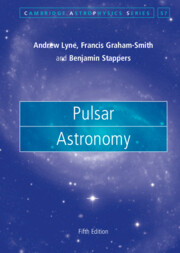Book contents
- Frontmatter
- Contents
- Preface
- Part I Discoveries and Techniques
- 1 The Discoveries
- 2 Telescope Techniques, Radio to TeV
- 3 Receiver Techniques and Data Analysis
- 4 Surveys and Population
- 5 Pulsar Timing
- 6 Timing and Astrometry of Binary Pulsars
- 7 The Distances of the Pulsars
- Part II Observed Physical Characteristics
- Part III Neutron Star Physics
- Part IV Environments and the Interstellar Medium
- References
- Index
4 - Surveys and Population
from Part I - Discoveries and Techniques
Published online by Cambridge University Press: 21 July 2022
- Frontmatter
- Contents
- Preface
- Part I Discoveries and Techniques
- 1 The Discoveries
- 2 Telescope Techniques, Radio to TeV
- 3 Receiver Techniques and Data Analysis
- 4 Surveys and Population
- 5 Pulsar Timing
- 6 Timing and Astrometry of Binary Pulsars
- 7 The Distances of the Pulsars
- Part II Observed Physical Characteristics
- Part III Neutron Star Physics
- Part IV Environments and the Interstellar Medium
- References
- Index
Summary
Finding the population of pulsars in the Milky Way galaxy requires a knowledge of the parameters and limitations of the various surveys made with different instruments and in different regions of the sky. We list the available survey data and show how models of the galactic population can be compared with the observational data, allowing estimates of pulsar birthrate and lifetime. Determination of accurate positions of individual pulsars require a Solar System ephemeris and a complex geometrical computation. Binary pulsar orbits display reletivistic effects which can be measured with remarkable precision to yield parameters of orbits and checks on relativistic theory.
Keywords
- Type
- Chapter
- Information
- Pulsar Astronomy , pp. 54 - 72Publisher: Cambridge University PressPrint publication year: 2022

